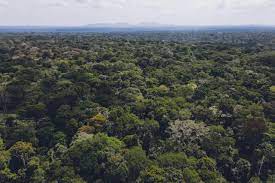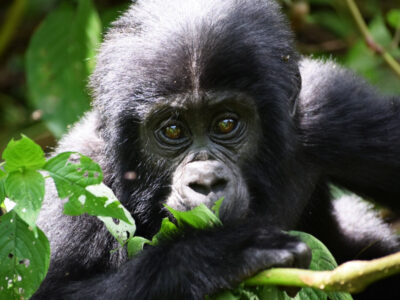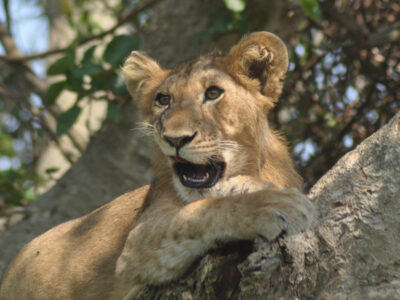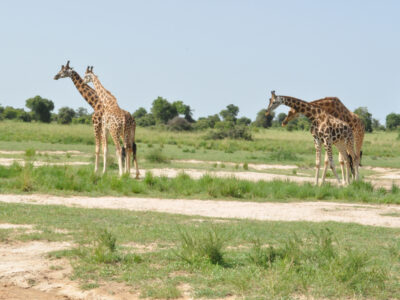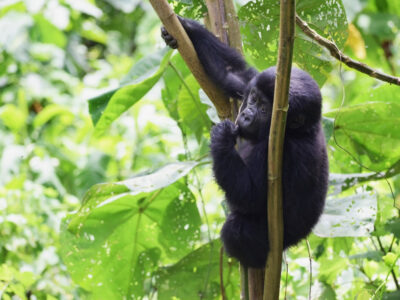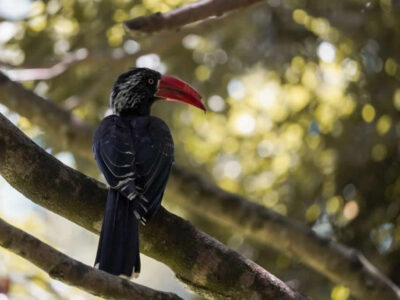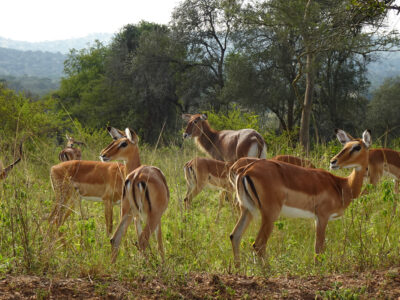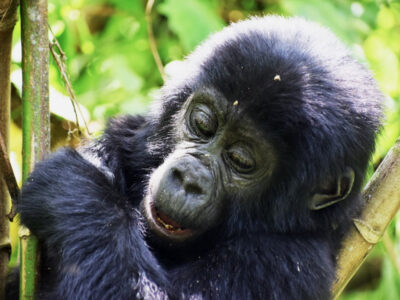CHANGE BUGOMA FOREST INTO A NATIONAL PARK.
Recently a study undertaken to identify the tourism potential has found that converting the forest into a national park could fetch Uganda tours at least US$547,500 (Approx. Shs2 billion) in tourism revenues every year in Bugoma central reserve forest in the middle –the western part of Uganda.
“Tourism Opportunities of Bugoma Forest” was the study titled conducted between April and June this year by the Inclusive Green Economy Network-East Africa (IGEN-EA), a regional consultancy firm, and it sought to understand what tourism opportunities exist around Bugoma Forest.
Bugoma Central Forest has found itself at the center of controversy between the government sugar manufacturers the Bunyoro Kingdom, and conservationists with the latter insisting that the forest should remain intact given its rich plant and animal life but also the emerging oil industry in the region over the last six years.
About Bugoma Central Forest Reserve
Buhoma central forest reserve is rich in biodervisity which was gazette in 1932 that was later legalized in 1944 however the land has been encroached upon by sugar barons, loggers and even cultivators.
The researchers recommended the government upgrade Bugoma Forest Reserve to a national park to protect it, especially its biodiversity and promote tourism just like all other forest reserves in the country fall under the ambit of the National Forestry Authority (NFA) that are under the protection and management of Uganda Wildlife Authority (UWA), the national agency in charge of wildlife conservation.
The report reads in part that the forest should be put under UWA’s management after being turned into a national park; the Ministry of Tourism, Wildlife and Antiquities, UWA and the Uganda Tourism Board (UTB) should in consultation with all other tourism stakeholders develop a tourism development strategy for Bugoma forest.
However, in 2018, government statistics showed the Ugandan revenue that was collected from visitors was about US$ 1.6 billion from about 1.5 million visitors. However to increase the tourism sector’s earnings to US$1.862 billion, and maintain the contribution of tourism to total employment at 667,600 people, the government had to devise an ambitious plan.
“It would also embark on a promotional campaign of domestic and inbound tourism by increasing the stock and quality of tourism infrastructure; as well as developing, conserving and diversifying tourism products and services.” the government said.
What is the potential of Bugoma tourism?
Bugoma ranked eleventh in overall biodiversity value and fifteenth in terms of rarity value according to research done by Birdlife International, an international conservation organization, of the “65 forested Protected Areas that were surveyed for biodiversity in Uganda.
It is noted during the study that biodiversity surveys of Bugoma forest reserve, smaller central forest reserves and forest corridors south of Bugoma is home to primates, elephants and other vertebrate fauna. Besides the above, the reserve inhabits 570 chimpanzees, 225 bird species, the Ugandan mangabey (which can only be seen in Uganda), bush elephants, butterflies and others.
“A local conservation pressure group is one of the leading supporters of converting Bugoma forest into a national park. His association has over the last five years been taking visitors on exclusive nature walks inside the forest.” the executive secretary of the Association for the Conservation of Bugoma Forest Robert Akugizibwe.
Bugoma’s main attraction is the encounter with the primates, especially groups of the Ugandan Mangabey (Lophocebus Uganda), which is endemic to this forest although the forest has plenty of attractions such as butterflies, insects, birds like Black and White Casqued Hornbill, Black-billed Turaco and the Olive Sunbird.
To support Tourism in Uganda, Jane Goodall Institute 2023 is putting efforts to habituate chimpanzee families in the Bugoma reserve forest although frustrating Akugizibwe to see the encroachment happening on the edges of the forest by the sugarcane growers.
He added that for the last two years, they have been trying to promote tourism but have been abandoned. No one helps them even the NFA neglected them. We could not tell exactly where the boundary of the forest ends,” he told The Independent. “Let Bugoma be promoted to a national park and change its management to Uganda Wildlife Authority.”
The minister may, by statutory instrument, after consultation with the Local Government Council in whose area a proposed wildlife conservation area falls and with the approval of Parliament signified by its resolution declare an area of land or water to be a wildlife conservation area that according to Section 25 of the Uganda Wildlife Act, 2019, which deals with the procedure for the declaration of a wildlife conservation area.
The Act reads in part before making a declaration under sub-section (1), the minister shall ensure that an environmental impact study and any other study that may be required have been conducted in accordance with the National Environment Act, 2019.
“The communications manager at UWA told The Independent on Aug.18 that there are no ongoing discussions between UWA and NFA to make Bugoma forest a wildlife reserve.” Bashir Hangi.
What are the attractions in the Bugoma Forest reserve forest?
- Birding
- Chimpanzee
- Mangabey trekking
- Nature walks.
That’s what researchers identified in both Hoima and Kikuube districts as the most attractive attractions in and around the reserve forest.
Chimpanzee tracking.
“While two groups consisting of eight tourists each are ordinarily permitted to trek chimpanzees in national parks such as Kibaale per day, scientists advise that for newly habituated chimpanzees such as those in Bugoma, only four people per group could trek chimpanzees per day.” The researchers say. However chimps can also be spotted in kyambura gorge in queen Elizabeth nationals, budongo forest in murchison falls national park and kalizu forest.
Despite the fact that it is a new destination that would not be as popular as the older trekking sites, chimpanzee trekking permits in Bugoma forest should be charged at US$50. The study further notes that two trekking sessions with four tourists each would be organized per day.
Birding.
Bugoma reserve forest is a birding paradise for bird lovers. The bird-watching activities to one session per day with five tourists paying US$80 each which however requires patience and is usually a whole day experience hence this means only one session a day can be arranged.
The bird-watching rate per tourist in Uganda is currently set at US$100. However, given the fact that bird watching in Bugoma Forest is new, if the activity is allowed in the forest as recommended by this study, it would be prudent to offer a cheaper price of US$80 to attract tourists.
Nature walks in the forest.
For the forest walks activity, the researchers say it is possible to organize two sessions in the mornings and evenings at the current rates of up to US$30. few tourists should be engaged in the activities to maintain quiet in the forest however the number of people going for bird watching and forest walks would be limited to five and ten respectively thus enabling the tourists to listen to the rhythm of the forest.
Cultural tour.
Bugoma Forest can also be harnessed for cultural tourism purposes. According to the researchers, they said that a section of Bugoma reserve was once the capital of Bunyoro Kingdom.
“Two Bunyoro kings had palaces in that section. In 1830, the Omukama (King) Nyamutukura Kyebambe III moved his palace from Buyaga to Kyangwali, where Bugoma forest is partly located. It is unfortunate that a small section of the kingdom selfishly let this part be destroyed. If conserved, the forest can form part of the cultural heritage of Bunyoro, which could be harnessed for tourism.” They added.
“The forest is also taken in very high regard as a traditional pharmacy with all sorts of herbs extracted from leaves, tree bark, vines and roots. There are other spiritual and/or traditional rituals that indigenous communities perform under the canopy of the forest. This part has the potential of being elevated to a Bunyoro cultural site.” They continued.

